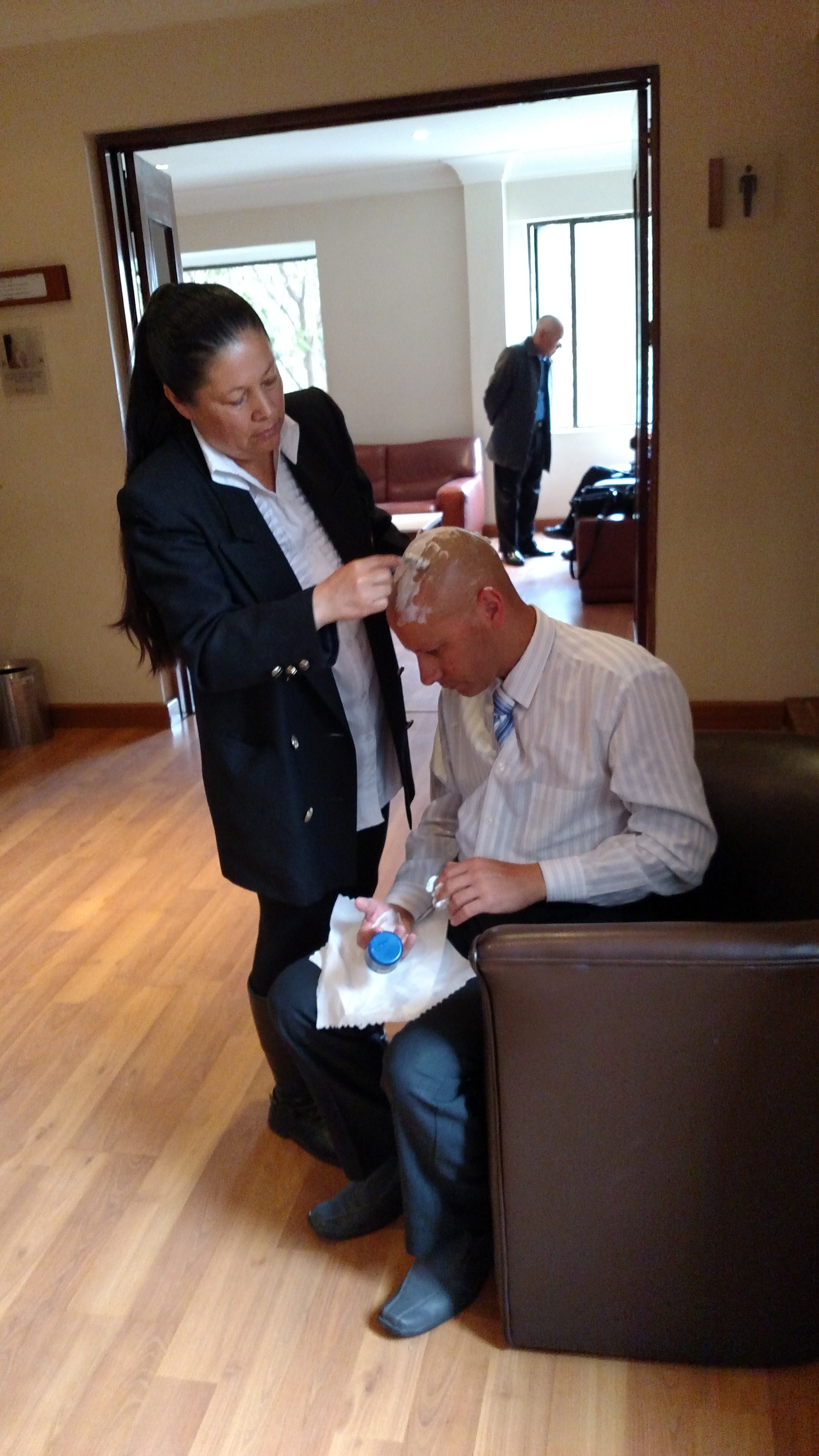My own personal image was taken in 2016 at the wake of my Abuelo (Papa) who had recently passed away from dementia. It was shot in Bogota, Colombia – ironically the wake took place a few blocks away from the apartment that my father and his family had lived in an earlier formative life. Wakes in Colombia are different than in American culture, as they typically take place in larger rented out spaces that the family will stay in for the entirety of the day. Visitors can wander the rooms, drink tea/coffee, and view the recently passed. In this image, my Tia is shaving my Tio’s head in the entrance of the room. In the background, my father’s body language speaks professionalism and anxiety. The image was taken right before the other family members had arrived.
I chose this image to pair to "Alaska Miracles", because in the context of the situation it could be viewed as a complimentary haircut service with coffee alongside an afternoon of mourning. At the time I had taken it because of the peculiarity of the situation- such an intimate action was taking place in entrance-way to the honoring and departure of a loved one into the after-life. I thought it was almost humorous and wanted to share it with others for a quick laugh. Now that I revisit it, I really see the anxiety in my Tio’s eyes and the care that my Tia is putting into making sure he feels put together and trim. My Tio, a man who is a man of obsessive-compulsion, needed my Tia in that moment for comfort.
As a passive observer, if I were to view this from a glance I would maybe see a woman being subservient to her man, or a pop-up barber shop. Perhaps I would reference the rampant machismo conduct in Latin culture. If I looked closer, I may have been able to see the distress in this man’s face and the therapist-like role of the woman cutting this man’s hair. But when I revisit this image I see a woman as a the rock of the family, an undervalued service. Yet in this image, I can only see a human grooming another to provide comfort.
Not featured: The coffee station to the left, the room in the background that, has my Abuela sitting in a wheelchair while my Abuelo rests within the casket. This photo was taken without on whim, and by the time I may have formulated the Spanish (I’m not 100% fluent), the facial expressions would have altered and the moment may have passed.

Commentary on Rachel Tanur's Works: Alaska Miracles